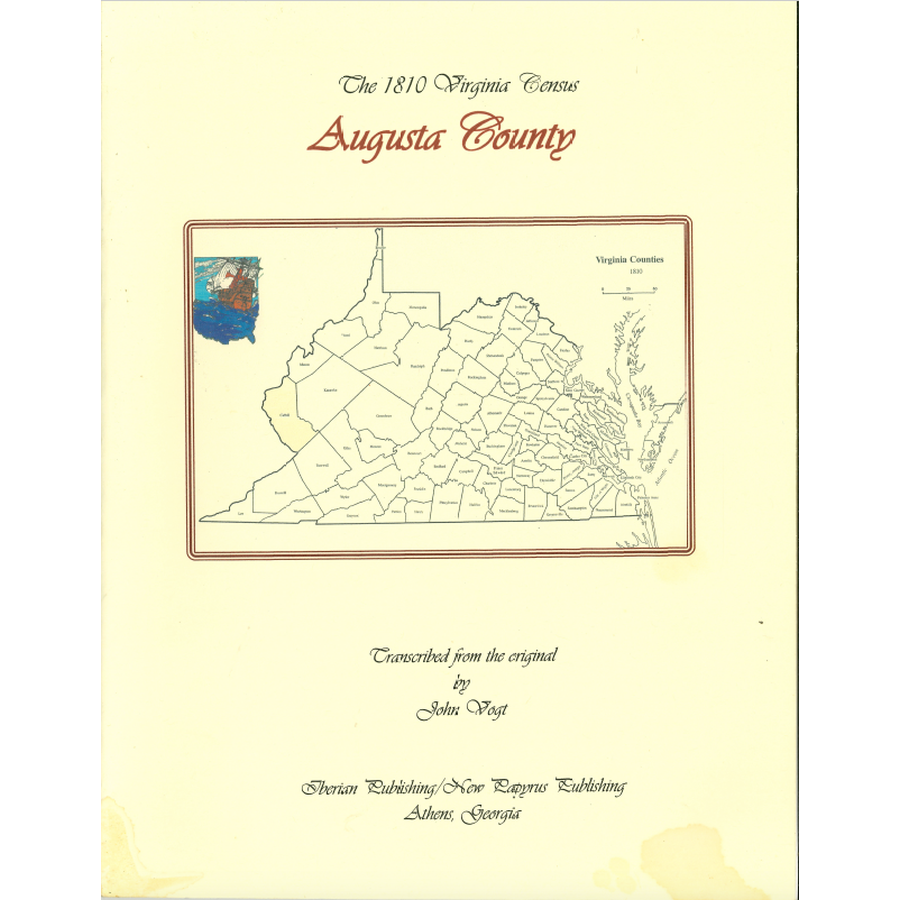Augusta County, Virginia 1810 Federal Census: A Transcription
Couldn't load pickup availability
The census includes separate lists for rural Augusta County, Virginia census as well as the communities of Staunton, Waynesboro, Greenville, and Middlebrook. Census returns are some of the first records that a genealogist turns to when studying a new family line. Unfortunately for Augusta County, as well as Virginia as a whole, both the 1790 and 1800 census reports for that state are lost. While the reason for their loss is argued, they nevertheless no longer exist. While personal property tax and land tax lists (which date from 1782) can be used to give some information about individuals, they do not give the researcher a glimpse into family composition or a snapshot of the county as a whole. Hence Augusta's 1810 census is the first real window we have from the census records of this county which had been first settled in the early eighteenth century and whose original boundaries once stretched beyond the Ohio River.
With the advent of the computer age and the publication of most of these early censuses, one would expect that many of the genealogist's problems would be resolved. Unfortunately, this has not happened. While many researchers rely completely upon online census records, these are often flawed by misread names and missing names altogether. The problem is the difficult reading of the documents, which often are written in a tight, cramped hand and with a myriad of possible readings. The close similarity between "S' and "L," "F" and "T", and recognizing the secretarial s, which appears as "ss" in the middle of words but not as an ending, can lead to nightmares in translation. Oftentimes, there is no distinction between an "e", an "o", and an "a" unless the reader is familiar with the family names within the document. These are only a few visual issues facing the transcriber. The author has been fortunate to have a professional background in paleography and history, both medieval and modern. In transcribing the current volume, comparison was made with other documents, as well as carefully examining each questionable character under magnification to ascertain the true intent of the writer. In the process, it became apparent that sometimes the census recorder himself was not familiar with strange-sounding German names or heavy Scottish brogues. One spelling would appear in the first encounter with the family, and then later on in the document, a different spelling would be given for the same family surname. In brief, computerized lists, while useful, do not give a total and accurate picture of the data. The census was recorded on one hundred folios in a small script, and herein lies the problem with "a", "e" and "o" in the body of a name. Only by carefully examining the transitions between characters can an accurate reading be obtained.
John Vogt
2008
107-AG10
